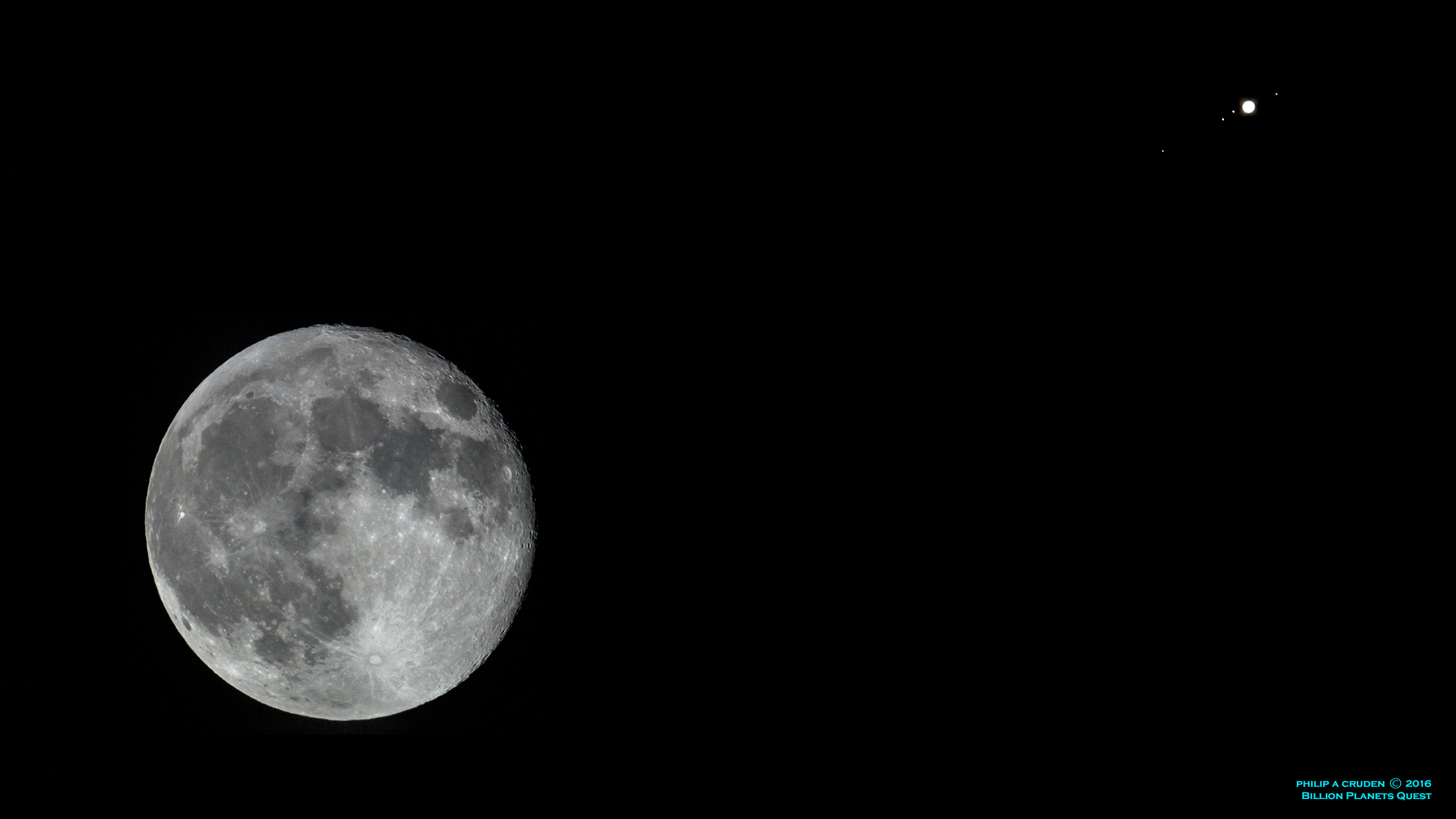When we see the Earth’s only Moon up in the sky, we often think about how small it is. It’s only about 1/4 the diameter of the Earth, and at a distance of 384,000 Km, it looks small in the sky. But often size is entirely a matter of perspective. What we compare something to, that’s what determines it’s size. When the Moon is high in the sky we easily compare it to the size of the window we are looking through, or to a nearby tree, or our outstretched hand. All of this can make the Moon seem pretty tiny.
Though have you ever noticed that when the Moon is close to the horizon, it seems bigger? Known as the Moon illusion, it arises because we have distant objects on the horizon to compare to the Moon, shifting our perspective and causing it to look larger than our brain usually estimates. The Moon hasn’t changed size, but our perception of it has.
Aside from how it looks to an Earthbound observer, the Moon is 3,474 Km wide. It was likely formed by the collision of a Mars-sized object with the young Earth about 4.5 Billion years ago. We know this because the radioactive isotopes in the Moon and Earth’s crusts have the same abundances, suggesting they were mixed sometime in the past.
Moon formation aside, we consider it a small object, and when you compare it to any of the planets in the solar system it is small. But it’s not a planet, so how does it stack up compared to the roughly 180 moons in the solar system?

Earth’s moon is actually huge for a moon. It is the 5th largest in the entire solar system, behind some true titans. Like Titan for instance. The top 6 are as follows:
- Ganymede
- Titan
- Callisto
- Io
- Luna
- Europa
Ganymede and Titan are actually both larger than the planet Mercury. They would make good planets if they orbited the Sun and not Jupiter. In fact all four of the Galilean moons of Jupiter made the list. And when you look at those moons, they are much more like strange planets than rocky satellites. I imagine distant star systems with no apparent rocky planets, but moons of gas giants that could be habitable. How strange it would be to live on a moon and have an odd cycle of light from the star. At any rate, we end up with fact #6!
Fact #6: Earth’s Moon is the 5th largest in the solar system, and is considered an abnormally large moon for a planet like Earth.
The norm among moons is to be small, rocky, and have a weird orbit. Our Moon is large, rocky, and has a very nice orbit. So with such a large Moon, what does it mean for us, the tiny Earthlings? The major effect the Moon’s gravity has on the Earth is the ocean tides and an occasional eclipse to get us to pay attention. But that’s about it.
Its size in the sky gives us a bit of a teaser when we look up. Most people can see the dark and light patches, and wonder what they are. Even a small telescope or a pair of binoculars will reveal stunning details and craters on the surface. Smaller moons just don’t appear very interesting. Take Mars’ moons Phobos and Deimos. Sure Mars has twice as many moons as Earth, but from the ground they are pretty boring. At least communications satellites orbiting the Earth reflect sunlight.
After we put the Moon in perspective, we can see it in a new light. It’s so much more than a boring rock that’s been with us since day 1. It’s a large world with a fascinating history, orbiting a planet far smaller than it should be, one of almost 200 others in the planetary system that orbits Sol.
If you’re interested in the others, here’s a little info:
Go out and see the Moon differently, it will always be there, big, bright, and beautiful.

